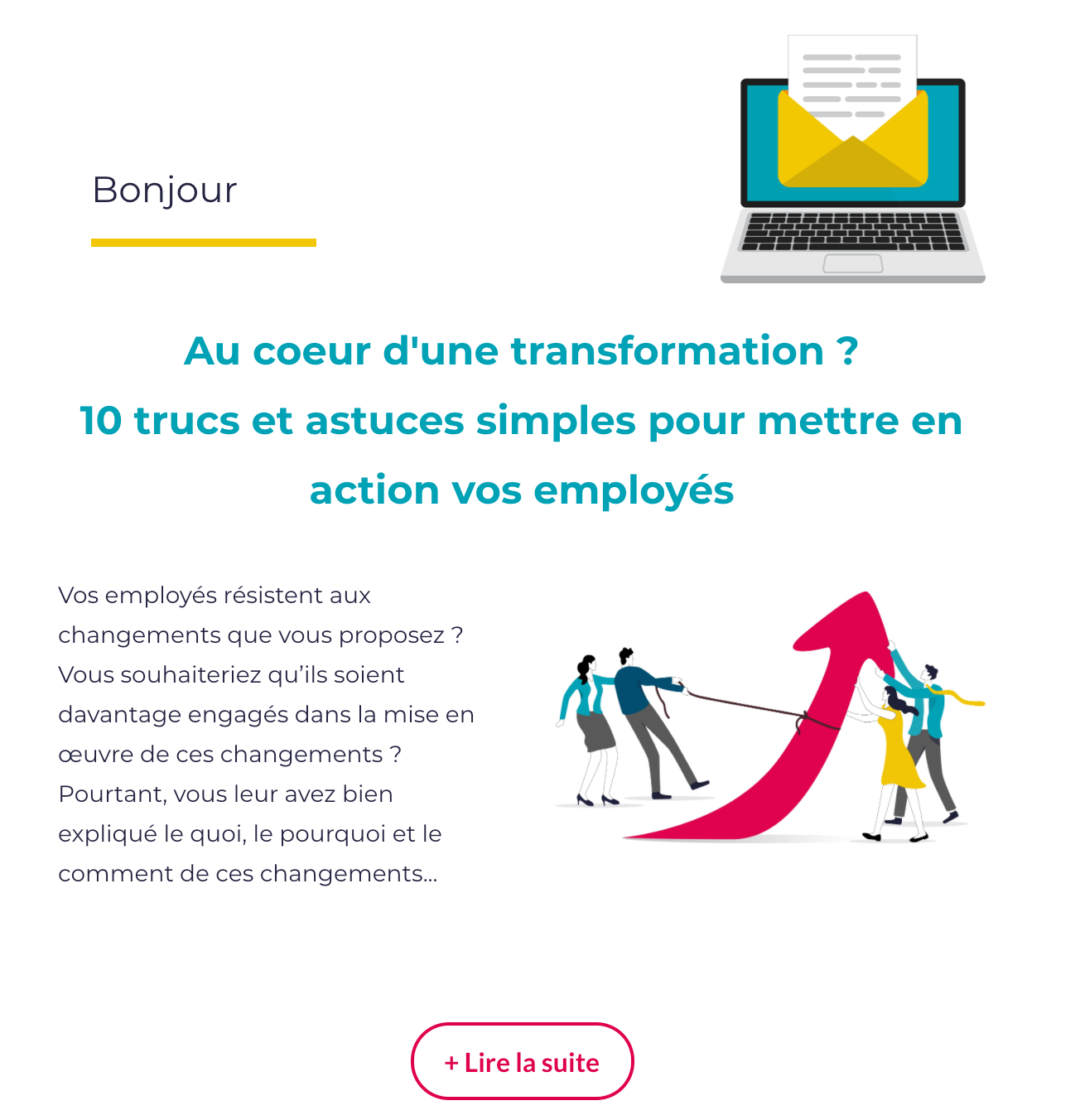In my previous blog post I covered the importance of listening to user preoccupations. Now that you understand why these preoccupations are beneficial to you and your project, let’s take a look at how you may obtain this valuable information and what you could be doing with it.
Here are a few tips to help you out.
1. Collecting preoccupations
Before you can plan to address any of the preoccupations or concerns, you need to identify what they are. So at this first stage the idea is to be in collection mode.
- Within the business area affected by your project, identify a few sample groups that are representative of the impacted users.
- Determine how the collection will be performed: team meetings, surveys, focus groups, or one-on-one interviews, whatever seems best suited to your project and the organization in which it is being implemented
- Provide the most up-to-date information to whoever will be leading the collection meetings or sessions. When meeting with users, they need to understand enough about the change so that their preoccupations are not just hypothetical but actually based on something.
- Provide a standard document and format to facilitate the collection and documentation of the preoccupations.
2. Use these preoccupations as an input for your communications and adoption management strategies
- The information you collected should feed your communication strategy. Make sure that the preoccupations shared by many are addressed in some manner in your communication activities.
- When providing responses to these concerns make sure they are in a language that is familiar to them and also in a way that is addressing the WIIFM (What’s in it for me?).
- When effectively managed, FAQs are a great way of providing responses to preoccupations.
3. Manage the management
- This may sound obvious, but before deploying your communication strategy at large and addressing these preoccupations, make sure the managers of the impacted users get a head start. Give them enough time to get familiar with the key messages you will be communicating.
- It’s also a good idea to give some thought to creating a channel for them where they can reach out to someone when additional concerns are voiced or clarifications are required.
4. Feed your risk register
- Preoccupations may also inform you on risks that may have been omitted or underestimated. By consciously deciding not to address certain preoccupations, you may be exposing the project to risks. As always, taking the time to reflect and document mitigation plans in the likelihood that these new risks arise will go a long way.
5. Challenge the solution
- Communication is not the only option for addressing and overcoming preoccupations; sometimes they allow us to question and revisit the solution we are implementing. Is the solution realistic? The information you have collected will allow you to tweak the solution to make it more acceptable and realistic with the purpose of reaching the project’s expected results.
Effectively managing and handling preoccupations gives the impacted users a sense that they are being heard. When choosing to ignore preoccupations, the project team is closing itself off from precious information on what it is that is keeping people from adopting a change.
So, I am curious to find out what other practices have you implemented in managing concerns that have been successful?



